We are on the way from the Red Lotus Lake to Ban Chiang, a prehistoric archaeological site of a mysterious advanced civilization.
Along the way, we meet a larger group of people, equipped with brush cutter, rake, and broom. They work along the road. We learn that once a year, the entire village takes action to clear the waste away and to take care of the roadsides.
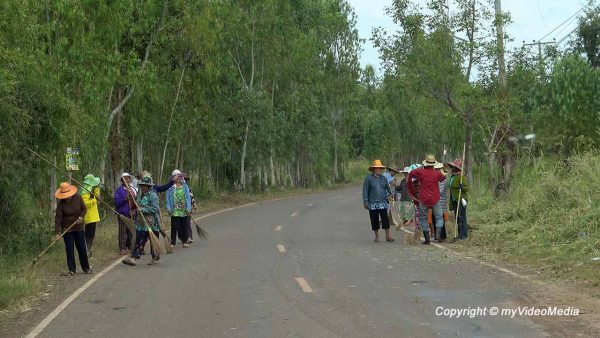
Shortly thereafter we pass a temple, with many small Chedis in front of it. The people keep a part of the ashes of their deceased at home and another part in these Chedis in the temple.
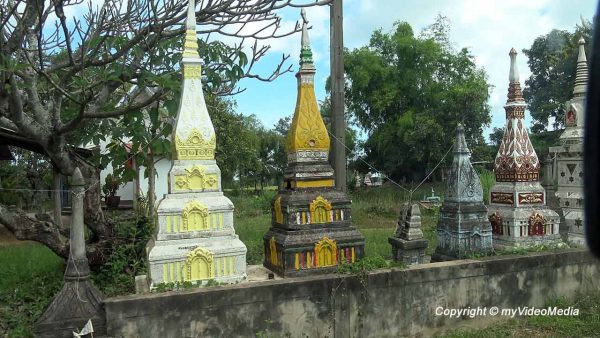
Passing a dried-out pond, our guide tells us that you one produces salt here. Because in the past, there was obviously an iodine deficiency in the population.
Ban Chiang
A large number of sales booths with clay jugs suggest that we approach the National Museum.
Please watch the 4K UHD video
You are currently viewing a placeholder content from YouTube. To access the actual content, click the button below. Please note that doing so will share data with third-party providers.
More InformationFor a long time, it was thought that the region was settled only about 200 years ago from Laos.
In 1966, Steve Young, the son of the former U.S Ambassador to Thailand, heard about ceramic, bone, and bronze finds in this area. He informed archaeologists in Bangkok who carried out an excavation.
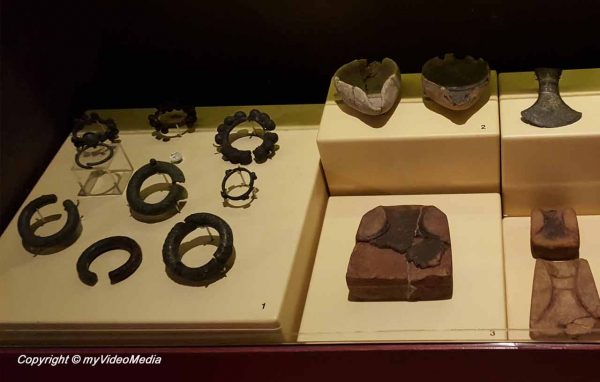
The latest age determinations prove that the first settlements took place around 3500 years ago. The bronze production started here about 3000 years ago.
The most recent archaeological finds date back to the 5th century AD, making this site one of the oldest and most important testimonies of a very advanced civilization Southeast Asia. Since 1992, Ban Chiang is on UNESCO world heritage list.

The Ban Chiang National Museum has different departments. It documents not only the finds but also the history of the excavations and the way of life of the population.

Various scenes are presented in a life-size manner. Also, a large number of ceramic vessels and bronze objects such as arm rings, bells, clasps etc. can be seen.
Wat Pho Sri Nai
Wat Pho Sri Nai is approximately 700 m in an easterly direction. Here we see the original excavation site. The finds stayed in their original positions.
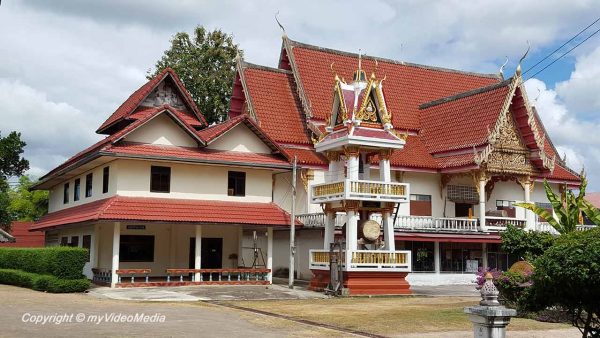
The grave no. 25 contained the skeleton of an adult male, aged over 30 years old at death.
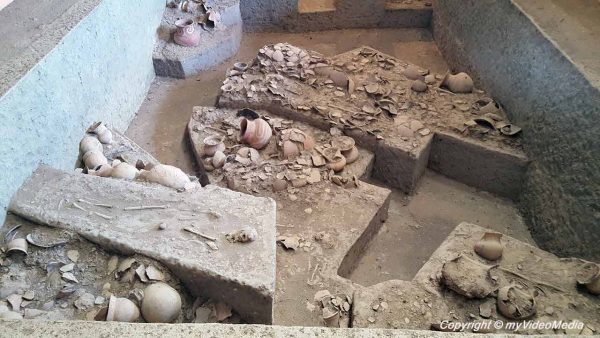
Deeply impressed we head towards the Mekong to visit the That Phanom Temple.
Pin it for later

Text, photos and video: Copyright © myVideoMedia